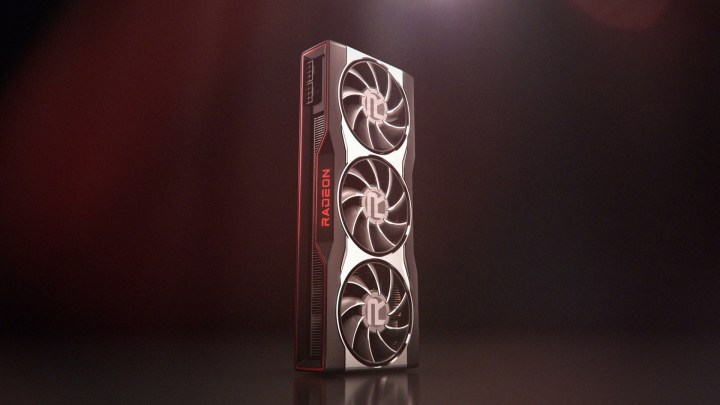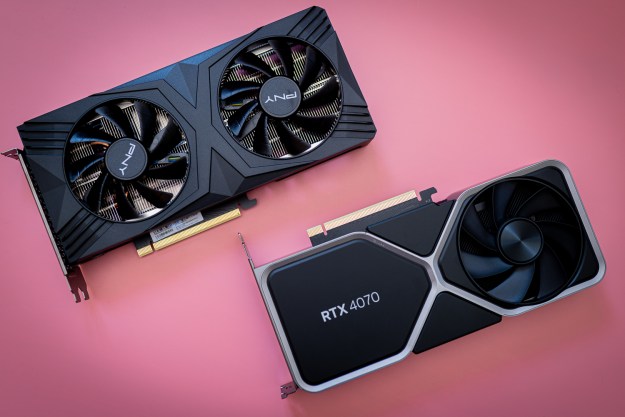
While many people still can’t get their hands on one of the graphics cards released in 2020, Nvidia and AMD are both already working on the next generation of GPUs. Using the Nvidia Ada Lovelace and AMD RDNA 3 architectures, these new graphics cards are rumored to offer performance that was previously unheard of. Kopite7kimi, a reliable leaker on the GPU scene, revealed some exciting information that tells us more about these cards.
The cards have not been given official names as of yet, but the leaker talks about Nvidia’s Ada Lovelace (AD102), Nvidia’s Hopper (GH202), and AMD’s RDNA 3 (Navi 3X). While nothing is set in stone yet, the most exciting piece of information is pretty straightforward — there might be a huge jump in performance.
Compared to Nvidia’s Ampere GA102 architecture, the new AD102 chip is rumored to offer a 2.2x performance increase. As if that wasn’t enough, AMD’s Navi 3X is said to take things a step further with a performance increase of up to 2.5x.
The cards in question are most likely going to be based on a 5nm process node as opposed to the 8nm process node used in, for example, RTX 3070 cards. The new GPUs are also rumored to use either TSMC’s or Samsung’s design. A drastic increase in power consumption is likely to follow the improved frames per second (fps), necessitating the use of even stronger PSUs.

Additional stats prove to be even more impressive. According to the leak, a single graphics card might come with up to 100 teraflops of FP32 compute power. If proven true, this means an increase of over 70 TFLOPs from Nvidia’s flagship RTX 3080.
It seems that Ada Lovelace is going to be a relatively small transition from Nvidia’s current Ampere technology, but Hopper is shaping up to be the next huge GPU revolution for the manufacturer. While the AD102 chip is going to be a straight upgrade with small architectural changes, Hopper is likely to be something else entirely, with a new approach to design and power requirements, as well as a boost in performance thanks to raster/ray-tracing.
It’s possible that the future AMD RX 7000 cards are going to outperform Nvidia’s RTX 4000 series, at least to begin with. This is because AMD is likely beating Nvidia in the race to offer the first MCM-powered graphics cards. On the other hand, Nvidia’s going to follow Ada Lovelace with Hopper — and that one is an MCM-based card expected to offer an up to 3x jump in performance.

In terms of today’s hardware, it almost seems like the sky is the limit, but Kopite7kimi also talks about a possible bottleneck for both Nvidia and AMD — memory bandwidth. With GPUs as powerful as these, GDDR6X will not suffice. This might force manufacturers to go back to HBM (high bandwidth memory) or perhaps work on a new GDDR memory standard.
The solution to memory bandwidth problems might also lie in close-to-GPU caches that could be helpful in avoiding possible bottlenecks. This is a technology we’re already familiar with thanks to AMD’s Infinity Cache, which has proven to be highly effective in its RX-6000 series cards.
The first rumors about Nvidia’s next series of GeForce RTX and AMD’s next Radeon RX surfaced in late 2020. These rumors are in line with the leaks Kopite7kimi reports. Another reliable leaker, KittyYYuko, also reported similar findings as to the next generation of cards for AMD.
However, as the release of these GPUs is unlikely to happen before 2022, or even 2023, it’s a good idea to wait for more information to surface.
Editors' Recommendations
- Intel Battlemage graphics cards: release date speculation, price, specs, and more
- Nvidia RTX 50-series graphics cards: news, release date, price, and more
- The sad reality of AMD’s next-gen GPUs comes into view
- You shouldn’t buy these Nvidia GPUs right now
- The most common GPU problems and how to fix them





